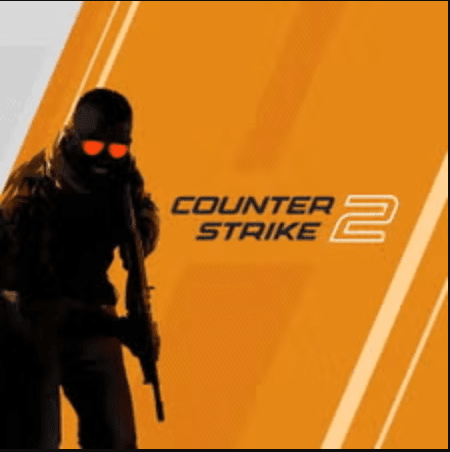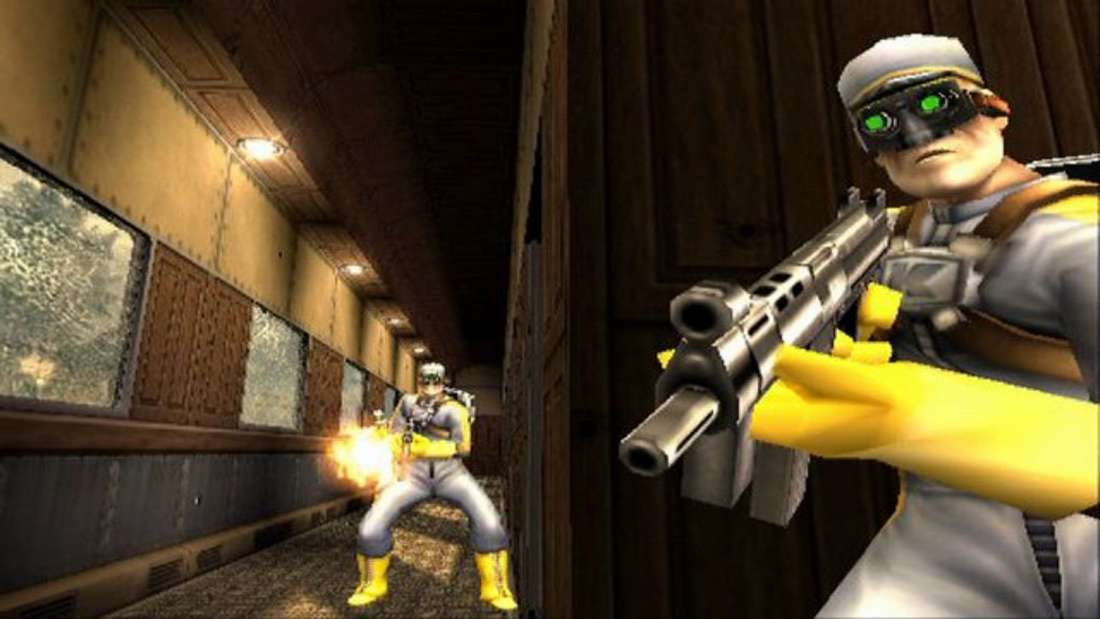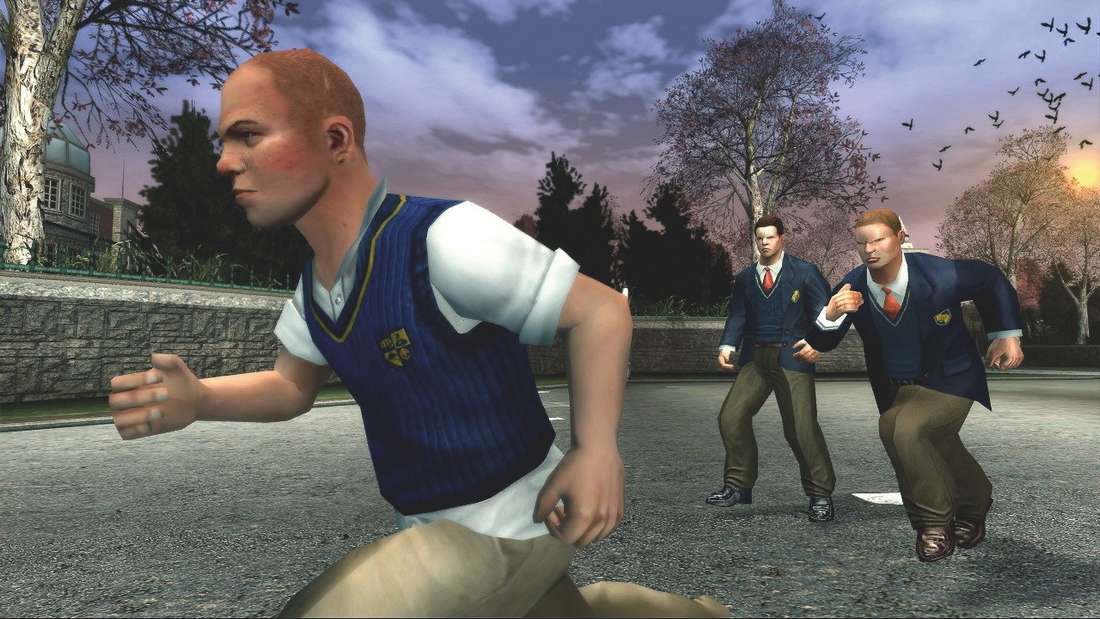TimeSplitters Revival Collapses: Co-Creator Blames ‘Bigger Forces’ and Steps Away from the Iconic FPS Franchise
Popular Now
 Call of Duty
Call of Duty
 PUBG Mobile
PUBG Mobile
 Garena Free Fire: Kalahari
Garena Free Fire: Kalahari
 Fortnite
Fortnite
 Roblox
Roblox
 Candy Crush Saga
Candy Crush Saga
 FIFA 23
FIFA 23
 Counter-Strike 2
Counter-Strike 2
 NBA 2K24
NBA 2K24
 Stumble Guys
Stumble Guys 
The highly anticipated revival of the cult-classic first-person shooter series, TimeSplitters, has been officially shelved, a casualty in the turbulent landscape of modern game development. In a candid and recent address, David Doak, co-creator of the original franchise, cast a sober light on the project’s demise, asserting that “bigger forces were in play” and declaring his personal reluctance to engage in a new Double-A shooter project. This news delivers a significant blow to the dedicated fan community and raises critical questions about the stability of the video game industry.
Doak, one of the key figures behind the celebrated GoldenEye 007 and Perfect Dark before co-founding Free Radical Design, spoke at a recent industry event following the closure of the studio—which had been reformed specifically to develop the new TimeSplitters game under the Embracer Group banner. The studio was among numerous casualties of Embracer’s mass layoffs and restructuring program. His remarks offer a rare, unfiltered perspective from a veteran developer grappling with the economics and corporate pressures of creating a modern title.
 The Corporate Clash: What Really Killed the Classic FPS Revival?
The Corporate Clash: What Really Killed the Classic FPS Revival?
The collapse of the TimeSplitters reboot is intimately tied to the widespread financial cuts and studio closures initiated by the parent company, Embracer Group, which followed a significant investment deal falling through. While Embracer has cited financial readjustments, Doak’s statement hints at a more complex, perhaps systemic, challenge within the corporate structure that made the project unviable.
“I don’t think it was our fault it didn’t work out,” Doak stated. “I can’t say much about it than that. Bigger forces were in play.”
Industry analysts interpret “bigger forces” as a blend of escalating development costs, a saturated market for online gaming platforms, and pressure from top-tier publishers to produce massive, immediate commercial hits. The original spirit of TimeSplitters—known for its innovative, quick-to-prototype development cycle and emphasis on split-screen, arcade-style multiplayer—appears to have been incompatible with the current financial models that prioritize monolithic, multi-year projects.
The situation highlights a recurring issue in the industry: the difficulty heritage franchises face when trying to adapt to the high-stakes environment of AAA gaming and the constant demand for fresh, engaging content in the face of established giants. The financial strain of competing in the current First-Person Shooter (FPS) space, particularly against games utilizing state-of-the-art gaming computer and graphics card technology, is enormous.
A Veteran’s Retirement from the Shooter Scene
Perhaps the most poignant part of Doak’s statement was his reflection on the modern development process and his personal exhaustion with the scene.
- The Difficulty of Modern Innovation: Doak noted that the contemporary shooter genre is “such an overworked scene, it’s so hard to innovate in it.” This suggests that simply resurrecting the old formula, even with modern assets, was not deemed sufficient by stakeholders to compete in the highly competitive eSports and multiplayer gaming markets.
- The Loss of Agility: He lamented the sluggish pace of modern production, contrasting it sharply with the original development era: “You could think of something at night, in bed, come in in the morning and say ‘hey guys, we should do this’ and by lunchtime you’ve tried it… by the end of the day it was either in the game or not in the game. I love working like that.” This agility is often lost when dealing with large teams, complex proprietary or off-the-shelf engines, and extensive corporate oversight.
- Stepping Away: The co-creator concluded with a decisive comment on his future involvement: “Certainly the prospect of making some kind of even Double-A shooter now I’m not up for it any more.” This emotional departure signals a profound disappointment with the process and potentially closes the door on the involvement of a core creative voice in any future revival attempts.
The sentiment is echoed by fellow co-founder Steve Ellis, who previously stated that the experience was “a big letdown” and that he is “probably done” with the series for good. This signifies a collective burnout and disillusionment among the original team, a major setback for the franchise’s continuity.
 The Market Reality: High CPC Keywords and Development Strain
The Market Reality: High CPC Keywords and Development Strain
The decision to cancel the game, while devastating for fans, reflects a ruthless market reality where even well-regarded IPs must demonstrate massive commercial viability, often targeted through High CPC Keywords such as ‘Best PC Games 2024,’ ‘New Console Releases,’ and ‘AAA FPS Titles.’ The initial pitch for the revival reportedly evolved drastically—at one point attempting to embrace a battle royale format to chase lucrative trends and high-volume search traffic—before pivoting to an expanded remake of TimeSplitters 2, a move arguably more aligned with fan sentiment but perhaps less appealing to corporate financial projections that demand a dominant online presence.
This episode serves as a cautionary tale for the video game industry: nostalgic revivals, despite strong fan demand, must successfully navigate a gauntlet of corporate financial planning, high-cost game engine integration, and the intense pressure to compete for player engagement in the cloud gaming and next-gen console era. The legacy of TimeSplitters will now continue to be defined by its innovative past rather than a modernized future.
Key Takeaways for the Future of Gaming IP
- Corporate Oversight: The influence of large parent corporations (Embracer Group) on creative direction and studio stability is an ever-present risk for beloved but dormant IPs.
- Development Cost: The economic barrier to entry for developing a competitive ‘Double-A’ or ‘AAA’ shooter is prohibitive, pushing veteran developers like Doak to step away.
- Innovation vs. Trend: The need to innovate while simultaneously chasing market trends (like battle royale games) can lead to project instability and loss of core identity.
- Fan Disappointment: The closure leaves one of the most requested revivals in limbo, highlighting the gap between fan desire and corporate feasibility in the modern gaming landscape.
The question remains whether the TimeSplitters IP will ever find a suitable home or if this marks the definitive end of the franchise’s journey, a victim of forces far larger than the time-traveling mayhem the series was known for.







 The Corporate Clash: What Really Killed the Classic FPS Revival?
The Corporate Clash: What Really Killed the Classic FPS Revival? The Market Reality: High CPC Keywords and Development Strain
The Market Reality: High CPC Keywords and Development Strain